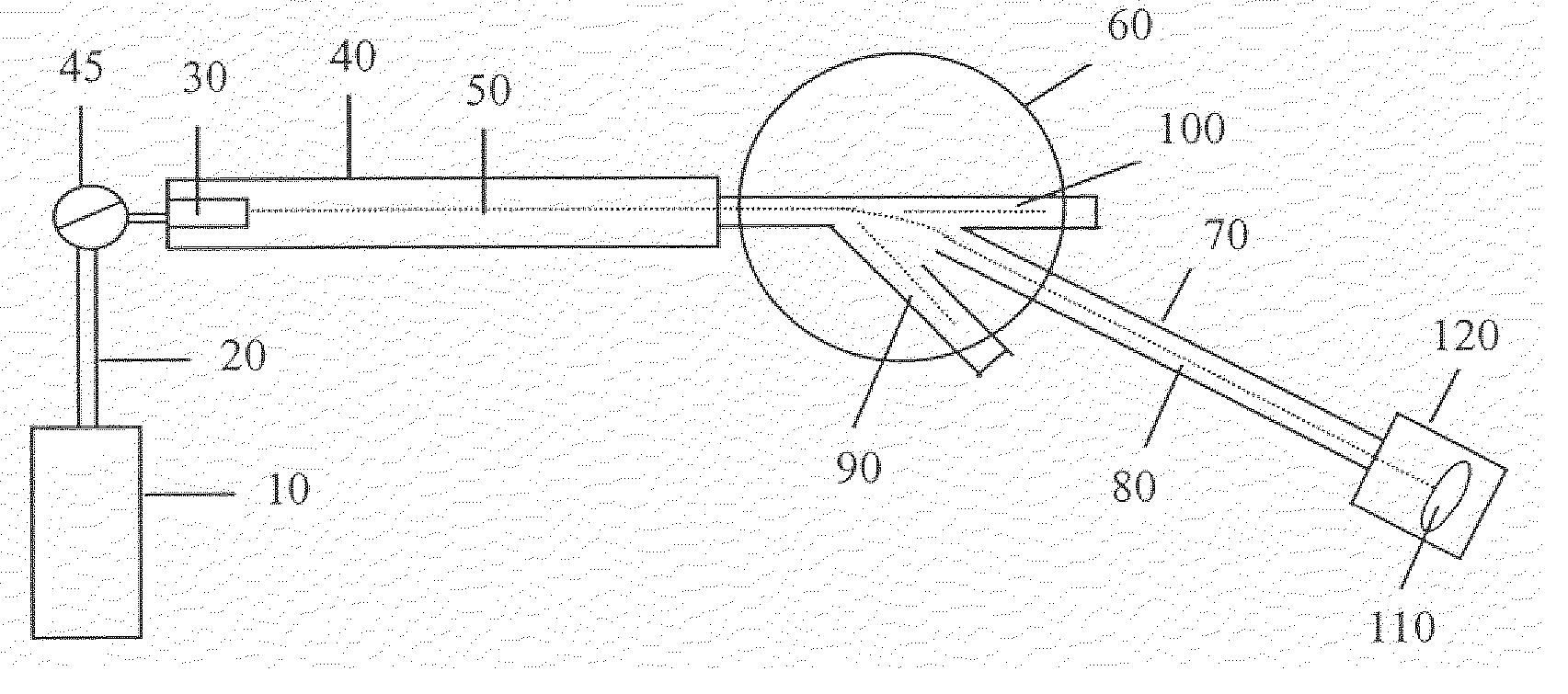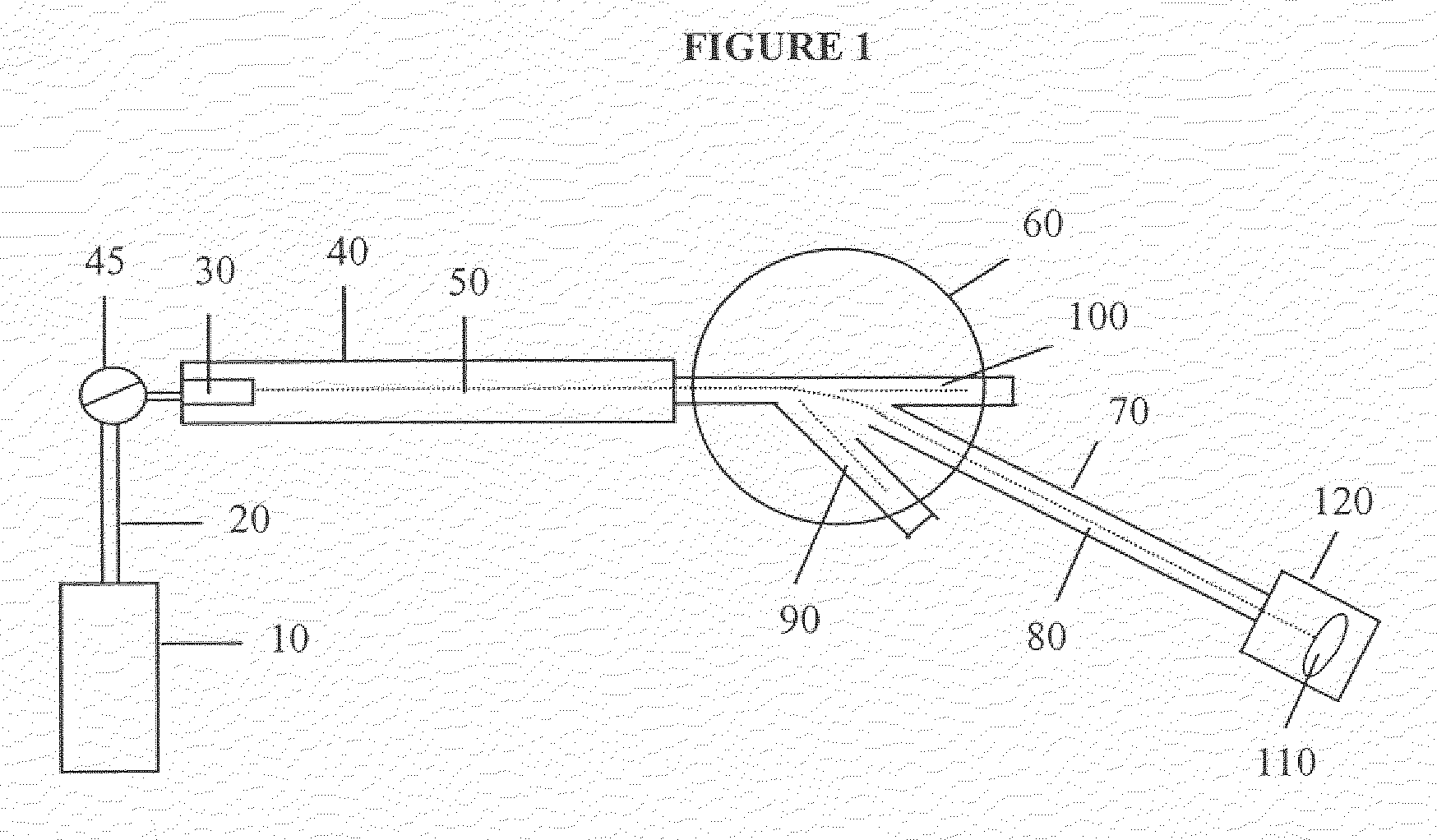Dopant Precursors and Processes
a technology of precursors and dopants, applied in the field of doped silicon and silicon alloy films, can solve the problems of difficult selection and inability to meet the requirements of the desired dopant species
- Summary
- Abstract
- Description
- Claims
- Application Information
AI Technical Summary
Benefits of technology
Problems solved by technology
Method used
Image
Examples
examples 1-3
[0051] A tube furnace having an inlet and outlet was equipped with a pre-mix chamber and mass flow controller. Three Si substrates were placed along the length of the furnace. The furnace was evacuated and heated to a temperature of about 575.degree.C. Trisilylphosphine gas was introduced into the furnace at a flow rate of about 5-10 standard cubic centimeters per minute (sccm) and a pressure of about 0.001 torr, and continued for about 15 minutes. The trisilylphosphine flowed along the length of the furnace to the outlet, thereby depositing Si-containing films on each of the three substrates. The substrate of Example 1 was closest to the inlet and the substrate of Example 3 was closest to the outlet.
[0052] All three films were polycrystalline and had a thickness in the range of about 500 to about 1000 . The approximate composition (.+-.1 atomic %) of each of the deposited films was measured by Rutherford backscattering spectroscopy (RBS). Hydrogen concentration was measured using ...
example 4
[0054] A Si wafer substrate is etched in a solution of dilute hydrofluoric acid, rinsed and dried, then loaded into an Epsilon E2500.TM.reactor system (available commercially from ASM America, Inc. of Phoenix, Arizona) and subjected to a hydrogen bake at 900.degree.C at atmospheric pressure under a flow of 80 standard liters per minute (slm) of ultra-pure hydrogen for 2 minutes. The substrate is then allowed to reach thermal equilibrium at 600.degree.C at 40 Torr pressure under a flow of 20 slm of ultra-pure hydrogen gas. The steps of etching, drying, rinsing, and baking render the single crystal surface active for epitaxial film growth.
[0055] Pure hydrogen gas is then passed through a liquid mixture of 99.999 weight % trisilane and 0.001 weight % trisilylarsine in order to deliver a vapor comprising trisilane and trisilylarsine to the heated substrate. The liquid mixture is maintained at room temperature using a water bath around the bubbler containing the mixture. The vapor is in...
PUM
| Property | Measurement | Unit |
|---|---|---|
| temperature | aaaaa | aaaaa |
| temperature | aaaaa | aaaaa |
| temperature | aaaaa | aaaaa |
Abstract
Description
Claims
Application Information
 Login to View More
Login to View More - R&D
- Intellectual Property
- Life Sciences
- Materials
- Tech Scout
- Unparalleled Data Quality
- Higher Quality Content
- 60% Fewer Hallucinations
Browse by: Latest US Patents, China's latest patents, Technical Efficacy Thesaurus, Application Domain, Technology Topic, Popular Technical Reports.
© 2025 PatSnap. All rights reserved.Legal|Privacy policy|Modern Slavery Act Transparency Statement|Sitemap|About US| Contact US: help@patsnap.com


